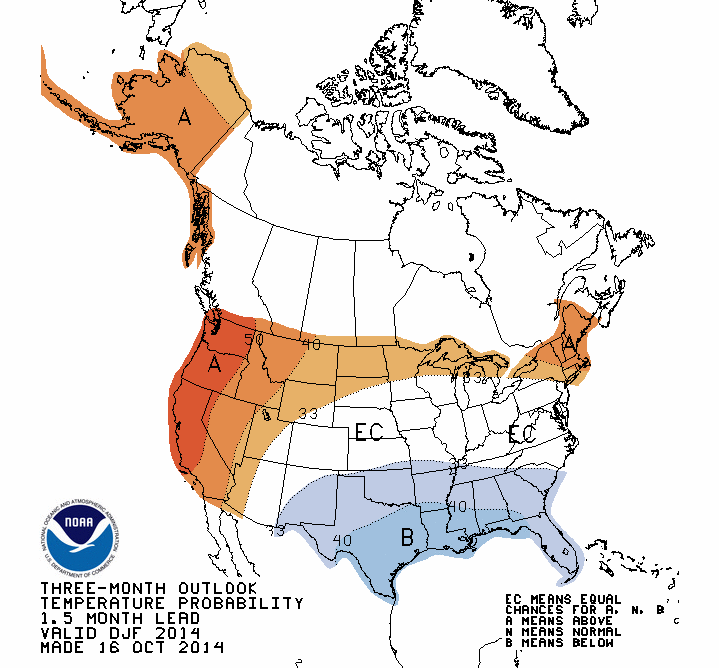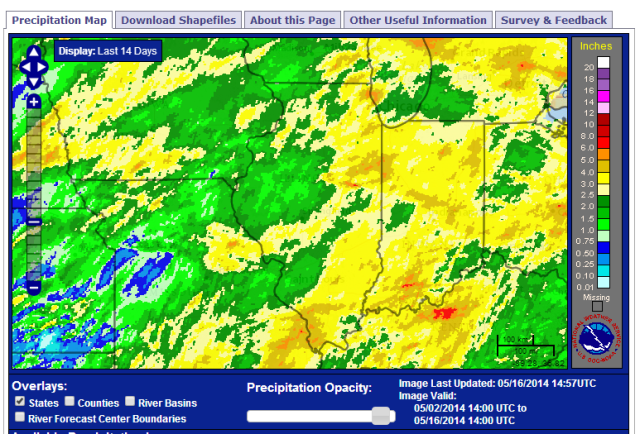Today the NWS Climate Prediction Center has released their latest outlook for November and this winter. Below are the maps for November temperature, November precipitation, December-February temperature, and December-February precipitation.
For Illinois, November temperatures have equal chances (EC) of being above, below, or near-average. November precipitation is rated as EC except for the northeast quarter of the state, which has an increased chance of below-average precipitation. This is part of a larger area with increased chances of below-average precipitation across the Great Lakes region.
The category of EC is a little hard to interpret. Basically, it means that there are no consistent indications that conditions could be too warm/cold/wet/dry. Sometimes I call it a neutral forecast.
For December-February, the traditional winter months, Illinois has equal chances (EC) of above, below, and near-average temperatures. However, Illinois has an increased chance of below-average precipitation.








